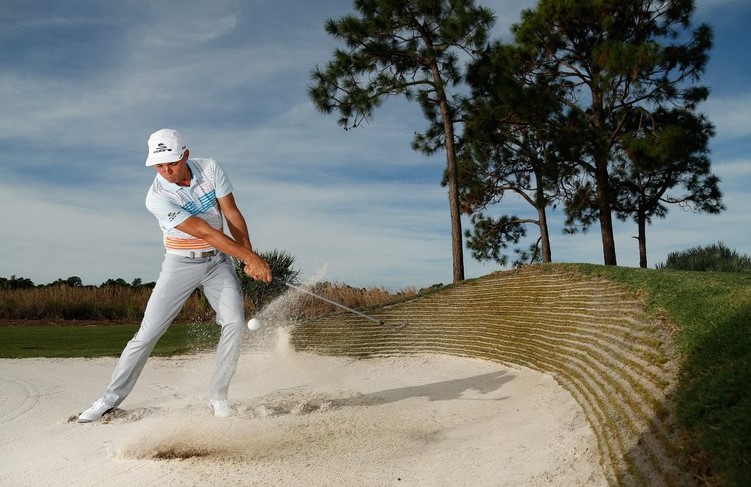In golf, not every shot lands perfectly on the fairway or green. Sometimes, the ball finds its way into one of the most challenging hazards on the course—the bunker. To deal with this situation effectively, golfers must master greenside bunker technique. These bunkers, strategically placed around the green, present difficulties even for professionals. Escaping them requires not just power, but also proper technique, directional judgment, and sensitivity to course conditions.
Below is a complete guide from GoGolf to help you develop consistent and confident greenside bunker play.
1. Assessing the Ball and Sand Conditions
The first step when your ball ends up in a bunker is to carefully evaluate its lie and the surrounding sand. How the ball is sitting in the sand determines the approach you should take.
- Good lie (partially buried, visible on top): Easier to strike cleanly since the clubface can still make effective contact.
- Bad lie (plugged or buried completely): Requires more advanced technique and usually more effort, as the club must dig deeper into the sand to move the ball.
The condition of the sand itself also matters:
- Dry, fluffy sand: Allows the ball to pop up more easily if struck correctly.
- Wet, compact sand: Provides more resistance, requiring greater strength and precision.
Before swinging, test the sand’s firmness by digging your feet slightly or making a light practice swing without touching the ball. By understanding both the ball’s lie and the sand texture, you set the foundation for choosing the right execution.
Make golf booking effortless. Install GoGolf App now!
2. Building a Stable and Consistent Bunker Stance
Once you’ve evaluated the lie, the next step is to set up properly. Because sand is unstable, a solid stance is essential.
- Dig your feet into the sand for stability.
- Position your feet shoulder-width apart (or slightly wider).
- Place 60–70% of your weight on your lead foot to ensure the club drives through the sand.
Ball placement is also crucial:
- Position the ball slightly forward in your stance (toward the lead heel for right-handed golfers).
- Keep your hands slightly behind the ball, opposite of a fairway shot, since the goal is to hit sand first.
Finally, open the clubface. An open clubface adds loft and bounce, helping the ball lift quickly and land softly. Combined with proper stance, this setup creates the consistency needed to escape bunkers effectively.

3. Defining the Contact Point: Hit the Sand, Not the Ball
The essence of a bunker shot is not striking the ball directly, but rather striking the sand behind it so the sand carries the ball out.
- Ideal contact point: About 1–2 inches behind the ball.
- If you hit too far behind, you’ll waste energy and the ball may stay in the bunker.
- If you hit too close, you risk thinning the shot and sending the ball skimming across the green.
Think of drawing an imaginary line in the sand just behind the ball—this is where your club should enter. The lifted sand acts like a cushion that propels the ball up and out.
Strength also matters:
- Thicker sand or deeper lies: Require more swing speed.
- Light sand: Needs less effort to avoid overshooting.
Practicing visualization helps build precision and confidence in hitting this crucial contact point.
4. Listening to the Sound of a Proper Bunker Shot
A good bunker shot doesn’t just look right—it sounds right. The ideal sound is a “thump” or splash of sand, indicating the club has entered the sand properly before lifting the ball.
- Correct sound: “Thump” of sand explosion, followed by the ball softly exiting.
- Wrong sound: A sharp “click,” meaning you hit the ball first (thin shot), which produces a low, skidding trajectory.
A classic training method for distance control is the “Rule of Three.” Play the bunker shot with the feel of a swing three times longer than the distance to the hole. For example, if the hole is 10 yards away, imagine swinging for a 30-yard shot. This mental adjustment helps generate enough power to clear the bunker while still landing the ball softly.
By learning to recognize the correct sound and feel, golfers can self-correct and refine their bunker technique under pressure.

5. Controlling the Swing: Rhythm Over Power
Bunker shots rely more on rhythm and precision than brute force. Maintaining a smooth, controlled swing is essential.
- Professionals often describe their swing path as moving from 10 o’clock on the backswing to 7 o’clock on the follow-through (for right-handed players).
- The swing should remain fluid and balanced, avoiding excessive aggression that disrupts stability.
- Keep the clubface under the ball’s center of gravity by maintaining an open face throughout the strike.
The goal is to allow the bounce of the wedge to slide through the sand. Overemphasizing power often leads to poor contact and inconsistency. Regular practice with different lies and sand textures helps sharpen swing control significantly.
6. Practicing Greenside Bunker Shots Consistently
As with all aspects of golf, bunker play requires consistent practice. Don’t only practice from ideal lies—train from plugged balls, wet sand, uphill and downhill lies as well.
Effective drills include:
- Marking a spot behind the ball and practicing hitting that same spot repeatedly.
- Using alignment sticks to monitor body and clubface position.
- Recording swings on video or training with a coach for instant feedback.
Watching professional golfers execute bunker shots is also beneficial. Study their body position, open clubface, and smooth rhythm, then visualize yourself doing the same. Visualization accelerates the learning process and builds confidence when facing real-game pressure.
With consistent practice and refinement of body posture, club setup, swing control, and mental approach, a golfer can dramatically improve bunker performance. Mastery in this area transforms bunker play from a dreaded challenge into a reliable scoring opportunity.
Final Thoughts
The greenside bunker shot is a test of technique, patience, and confidence. By evaluating sand and ball conditions, setting a stable stance, focusing on the correct contact point, controlling rhythm, and practicing across varied scenarios, golfers can build the skills necessary to escape bunkers with consistency.
Success in bunkers is rarely about luck—it comes from technical mastery developed through practice and perseverance. With time, the bunker can go from being one of the most intimidating hazards to one of the most manageable situations on the course.
[ Follow our social media Account: GoGolf Instagram | GoGolf Facebook | GoGolf X ]











